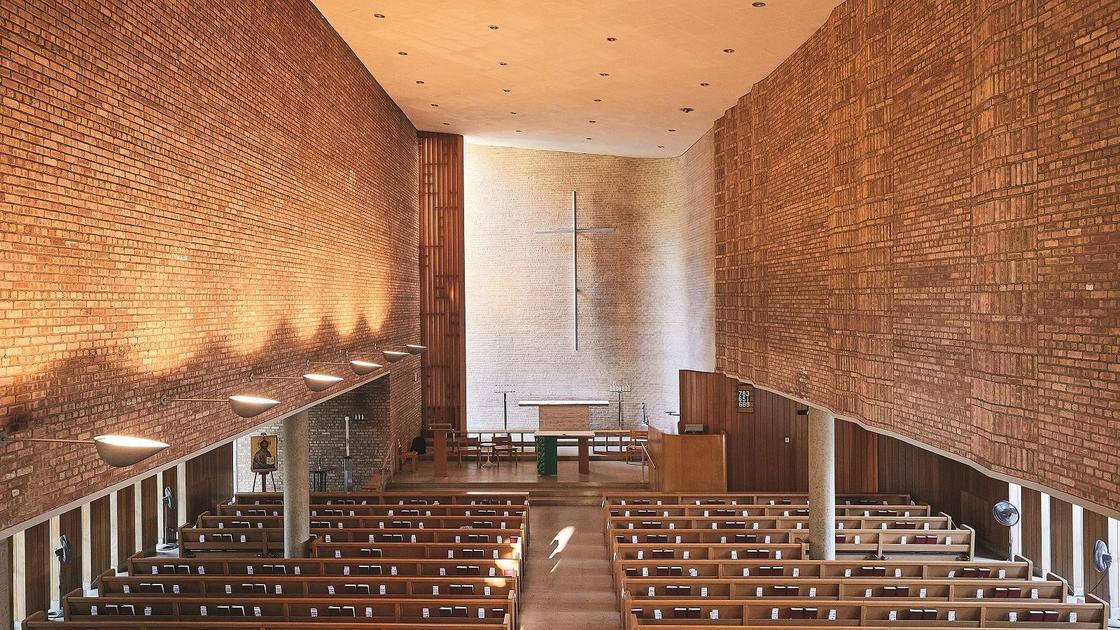When Francis Poulenc’s Gloria was first performed in 1961, some critics derided it as “sacrilegious.”
With his setting of the liturgical text, scored for chorus, soprano solo, and large orchestra, Poulenc followed in the footsteps of composers such as Vivaldi and Handel. But here, the exalted text is approached, not with solemnity, but with playful exuberance. Mysticism blends with humor. There is a joyful sense of song, dance, and the sounds of a Parisian cafe. The text unfolds with a conversational rhythm. Summing up the spirit of the work, Poulenc said, “While writing it I had in mind those Crozzoli frescoes with angels sticking out their tongues, and also some solemn-looking Benedictine monks that I saw playing football one day.”
The first movement (Gloria in excelsis Deo) begins with a celebratory musical announcement in G major. The theme directly quotes the opening of Igor Stravinsky’s 1925 Serenade in A for Piano. The chorus emerges over a restless walking bass line. With accented syllables on offbeats, the rhythm feels off balance. The irregular march concludes with a comically haphazard cadence.
Beginning with witty neoclassical banter initiated by the trombone, the second movement (Laudamus te) is a jubilant dance. Meter changes and irregular phrases give the text a breathless, giddy quality.
Moving to B minor, the third movement (Domine Deus, Rex caelestis) is a serene meditation. The solo soprano is heard for the first time. Tinged with melancholy, a musical conversation emerges among the the soprano, chorus, and the instrumental voices of the orchestra.
Marked “very lively and joyful,” the brief fourth movement (Domine Fili unigenite) returns to G major jubilance.
The fifth movement (Domine Deus, Agnus Dei) is shadowy and haunting. It begins in remote B-flat minor, with a dissonance, punctuated by the bassoon. A mysterious dialogue unfolds between the soprano and chorus. At times, the solo soprano lines drift into a world of transcendence and childlike innocence. These fleeting visions are interrupted and brought back to earth.
The final movement (Qui sedes ad dexteram Patris) begins with declamatory, a cappella, homophonic statements by the chorus, interspersed with echoes of the first movement’s opening flourish. Filled with shimmering colors, the final moments are marked “with extraordinary calm.” B minor and G major chords, representing the work’s principal keys, are heard simultaneously. The opening flourish returns for one final outburst before the final tones fade into a dreamy pandiatonic haze.
Poulenc’s Gloria was commissioned by the Koussevitsky Foundation in honor of Sergei Koussevitzky (music director of the Boston Symphony) and his wife, Natalia. The premiere on January 21, 1961 was performed by the Boston Symphony Orchestra, the Chorus Pro Musica, and soprano Adele Addison, with Charles Munch conducting.
This 2019 performance features soprano Lauren Michelle and the Orchestre Philharmonique de Radio France and Choir, led by Mikko Franck:
Here is the text, with translation:
I. Gloria in excelsis Deo
Et in terra pax hominibus bonæ voluntatis.
Glory to God in the highest
And on earth peace, goodwill to all people.II. Laudamus te, Benedicimus te, Adoramus te, Glorificamus te.
Gratias agimus tibi Propter magnam gloriam tuam.
We praise you, We bless you, We worship you, We glorify you.
We give thanks to you for your great gloryIII. Domine Deus, Rex cælestis, Deus Pater omnipotens.
Lord God, heavenly King, Almighty Father.IV. Domine Fili unigenite, Jesu Christe.
Lord, the only-begotten Son, Jesus Christ.V. Domine Deus, Agnus Dei, Filius Patris, Rex Celestis
Deus Qui tollis peccata mundi, Miserere nobis; suscipe deprecationem nostram.
Lord God, Lamb of God, Son of the Father, King in Heaven
Who takes away the sins of the world, Have mercy on us. Receive our prayers.VI. Qui sedes ad dexteram Patris, miserere nobis.
Quoniam tu solus Sanctus, Tu solus Dominus, Tu solus Altissimus.
Jesu Christe, Cum Sancto Spiritu in gloria Dei Patris. Amen.
You who sit at the right hand of the Father, have mercy on us.
Only you are holy, only you are Lord. Only you are most high.
Jesus Christ, the Holy Spirit in the glory of God the Father. Amen.
Five Great Recordings
- Seiji Ozawa with Kathleen Battle, the Boston Symphony Orchestra, and the Tanglewood Festival Chorus
- Paavo Järvi with Orchestre de Paris and Choir
- Robert Shaw with Sylvia McNair, the Atlanta Symphony Orchestra and Chorus
- Leonard Bernstein with Judith Blegen, the New York Philharmonic and Westminster Choir
- Stephen Layton with Susan Gritton, the Britten Sinfonia, the Choir of Trinity College Cambridge
Featured Image: Christ Church Lutheran in Minneapolis (1940) designed by Eliel Saarinen, photograph by Wing Ho

